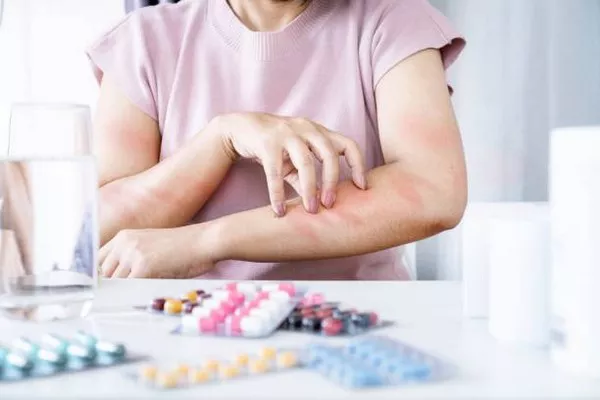Mould rash, also known as a fungal skin rash caused by exposure to mould, can be both uncomfortable and persistent. It often results from prolonged contact with damp environments, such as bathrooms, basements, or water-damaged buildings. Treating mould rash early is key to reducing symptoms and avoiding further complications.
This article explains how to identify, treat, and prevent mould rash using simple, effective steps.
Understanding Mould Rash
What Is Mould Rash?
Mould rash is a skin reaction triggered by contact with mould spores. These spores are tiny airborne particles released by fungi that thrive in moist areas. When mould spores land on the skin or are inhaled, they can lead to irritation or an allergic reaction.
Common Causes of Mould Rash
- Living in damp environments
- Exposure to mould-infested surfaces
- Wearing damp clothing for extended periods
- Poor ventilation in living or working areas
- A weakened immune system
Symptoms of Mould Rash
The rash usually appears as:
- Red, itchy patches
- Dry or scaly skin
- Blisters or bumps in severe cases
- Burning or stinging sensation
- Rash in warm, moist areas like under the arms or around the groin
If the rash spreads or becomes painful, it’s important to seek medical help.
Step-by-Step Treatment for Mould Rash
1. Remove the Source of Mould
Clean or Leave the Affected Area
First, reduce your exposure. If the mould is in your home, clean it thoroughly using proper safety gear. In severe cases, you may need to move to a safer, mould-free environment.
Improve Ventilation
Keep windows open when possible. Use fans or dehumidifiers to reduce moisture levels.
Fix Leaks and Damp Spots
Repair leaking pipes, roofs, or windows that allow moisture to gather.
2. Clean the Skin
Gently Wash the Area
Use warm water and mild soap to clean the rash area. Do not scrub. Pat the skin dry with a clean towel.
Avoid Fragranced Soaps
Choose hypoallergenic or unscented products to reduce irritation.
3. Apply Topical Antifungal Creams
Over-the-Counter (OTC) Creams
Use OTC antifungal creams like:
- Clotrimazole
- Miconazole
- Terbinafine
Apply twice daily or as directed on the packaging.
Prescription Creams
If OTC treatments don’t work, a doctor may prescribe stronger antifungal creams or ointments.
4. Take Oral Antifungal Medication (If Needed)
In severe or widespread cases, your doctor may prescribe oral antifungal medication such as:
- Fluconazole
- Itraconazole
- Griseofulvin
Always follow the dosage instructions and complete the full course of treatment.
5. Use Anti-Itch Remedies
Calamine Lotion or Hydrocortisone
For itching or inflammation, apply hydrocortisone cream or calamine lotion. These help calm irritated skin.
Avoid Scratching
Scratching can make the rash worse and may cause infection. Keep nails short and clean.
When to See a Doctor
Persistent Symptoms
If the rash doesn’t improve after one to two weeks of home treatment, consult a doctor.
Signs of Infection
See a healthcare provider if you notice:
- Pus or yellow discharge
- Increased redness or swelling
- Fever or chills
These may indicate a skin infection needing medical treatment.
Preventing Mould Rash in the Future
1. Keep Your Environment Dry
Use Dehumidifiers
These devices reduce humidity, especially in basements or bathrooms.
Fix Leaks Promptly
Inspect your home regularly and repair any water leaks immediately.
2. Improve Air Circulation
Open Windows Daily
Fresh air reduces mould growth.
Install Exhaust Fans
Use fans in kitchens and bathrooms to prevent moisture buildup.
3. Clean Mould-Prone Areas
Routine Cleaning
Clean tiles, shower curtains, and sinks weekly with mould-killing solutions such as vinegar or bleach (mixed with water).
Remove Mouldy Items
Dispose of mouldy carpets, furniture, or clothes that cannot be cleaned.
4. Wear Protective Clothing
Use Gloves and Masks
When cleaning mould, wear gloves and an N95 mask to avoid inhaling spores or getting them on your skin.
Natural Remedies to Support Healing
1. Tea Tree Oil
Has natural antifungal properties. Mix a few drops with carrier oil and apply it to the affected area. Do a patch test first.
2. Apple Cider Vinegar
Dilute with water and use as a skin rinse. It may help kill fungi and reduce itching.
3. Aloe Vera Gel
Soothes irritated skin and may support healing.
Note: Natural remedies are supportive and not replacements for antifungal treatments.
Special Considerations
Children and Infants
Children have more sensitive skin. Always check with a pediatrician before using creams or treatments.
People with Allergies or Asthma
Those with mould allergies or asthma should avoid exposure altogether. Wearing a mask and using air purifiers may help reduce symptoms.
Pregnant or Breastfeeding Women
Speak with a doctor before using antifungal creams or oral medications during pregnancy or breastfeeding.
Conclusion
Mould rash is treatable and preventable. The key steps include removing exposure to mould, cleaning the affected skin, and using antifungal medications. Home remedies can help soothe symptoms, but professional treatment may be necessary for persistent cases.
By maintaining a clean, dry environment and acting quickly at the first signs of irritation, you can effectively manage mould rash and protect your skin health in the long term. If in doubt, always seek medical advice to ensure the right treatment plan.
You Might Be Interested In:
- Climate Change and Shifting Fish Populations May Alter Allergy Patterns
- Breakthrough in Epitope Mapping Offers Hope for More Accurate Fish Allergy Diagnosis
- The Emergence of Antibiotic-Resistant Diarrheal Pathogens: A Looming Crisis

